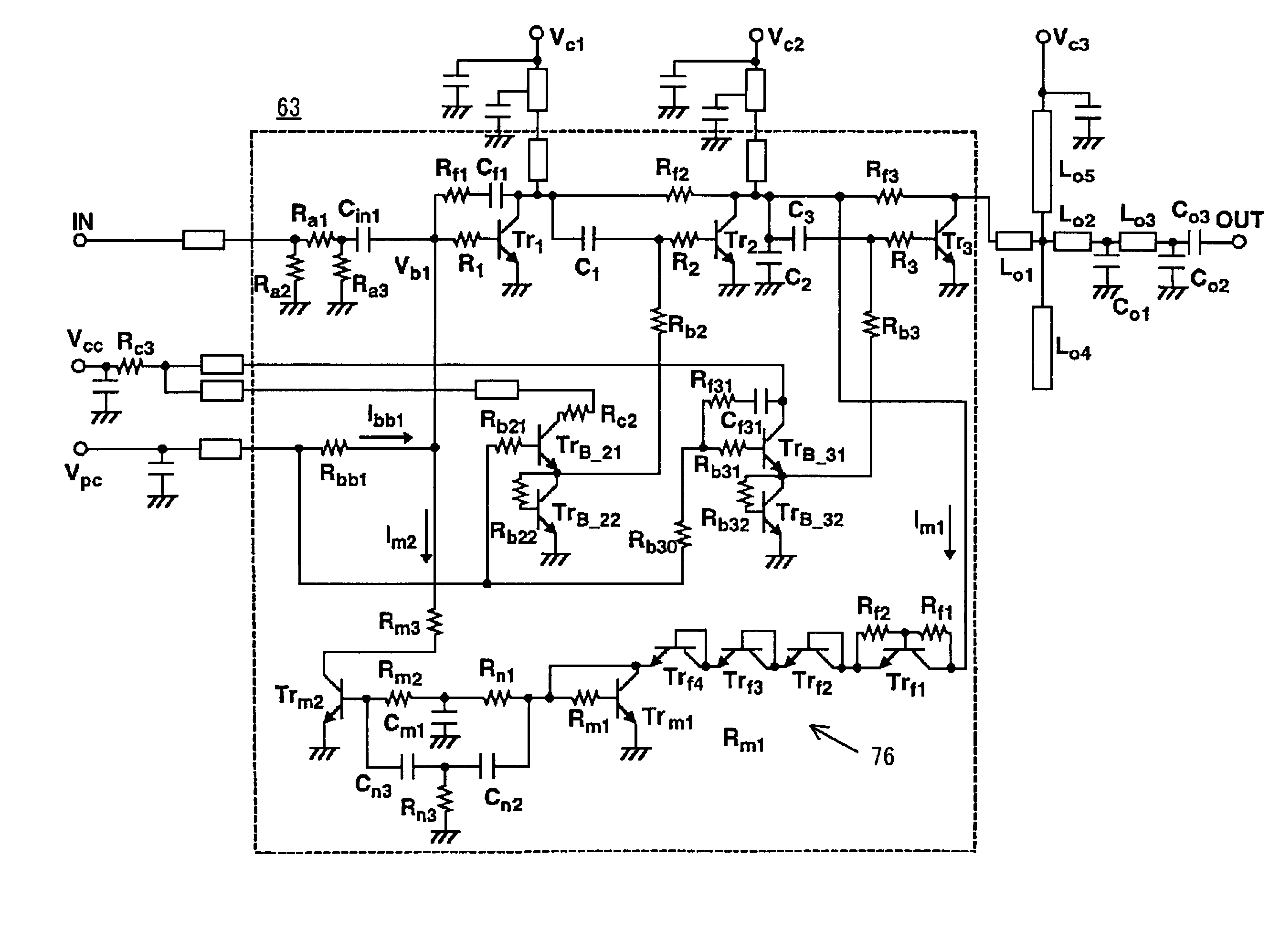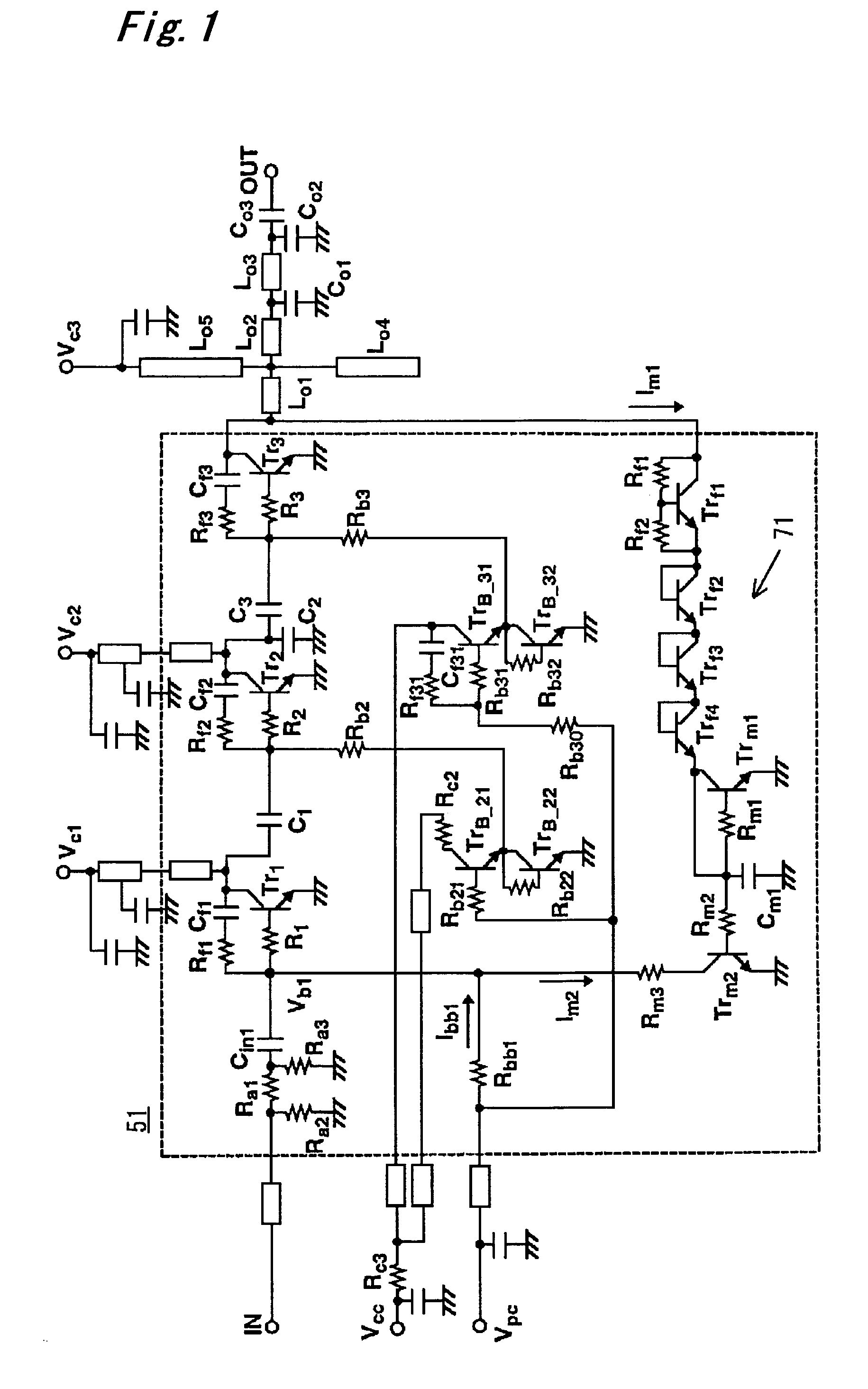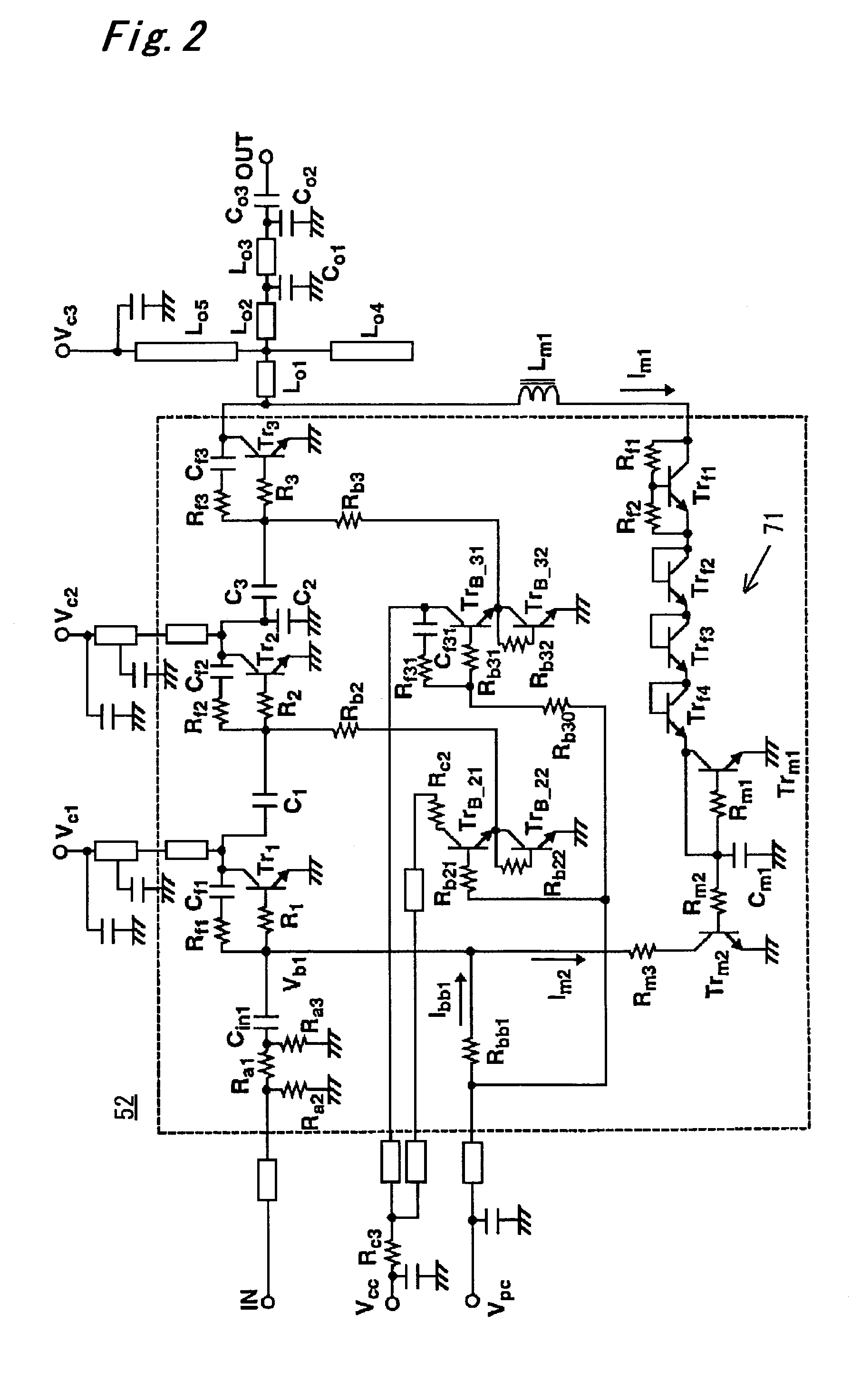Output overvoltage protection circuit for power amplifier
a protection circuit and power amplifier technology, applied in amplifier protection circuit arrangements, amplifiers with semiconductor devices only, amplifiers with semiconductor devices, etc., can solve the problems of thermal breakdown of the final-stage transistor, serious suffered from the aforementioned problem of transistor breakdown, and the inability to prevent thermal breakdown of the transistor, so as to reduce the output of the transistor
- Summary
- Abstract
- Description
- Claims
- Application Information
AI Technical Summary
Benefits of technology
Problems solved by technology
Method used
Image
Examples
first embodiment
[0042]FIG. 1 shows a circuitry of a GSM power amplifier with an output overvoltage protection circuit according to a first embodiment of the present invention. A signal entered into an input terminal IN is amplified through three amplifier HBTs (hereinafter referred to as “transistors”) Tr1 to Tr3 in this order. A voltage Vpc supplied to an output-power control terminal acts to supply a base current (bias) to the transistor Tr1 and to supply a base current to the transistors Tr2, Tr3, respectively, through transistors (TrB_21, TrB_22) and transistors (TrB_23, TrB_24) which are fed from an voltage Vcc at a power supply terminal, so as to variably control the output of the final-stage transistor Tr3. The output of the final-stage transistor Tr3 is led to an output terminal OUT through microwave lines Lo 1 to Lo 5.
[0043]Each of the transistors Tr1 to Tr3 has characteristics of providing a high low-frequency gain, and easily oscillating at a low frequency as compared to a FET power ampl...
second embodiment
[0054]FIG. 2 shows a power amplifier 52 with an output overvoltage protection circuit according a second embodiment of the present invention. In addition to the circuitry in FIG. 1, the power amplifier 52 includes an RF blocking inductor Lm1 inserted into a line connecting between the collector of the final-stage transistor Tr3 and the collector of the transistor Trf1 in the output-voltage feedback section.
[0055]In the circuitry of FIG. 1, if the voltage smoothing in the current mirror section is not sufficient, ripples to be varied according to operating frequencies will be included in the current I m2. This creates a parasitic oscillation loop such that the bias of the first-stage transistor Tr1 is slightly changed and this slight change causes a subtle change in the output voltage.
[0056]In particular, when the power amplifier has a high small signal gain, the above parasitic oscillation becomes significant. Therefore, it is required to design the power amplifier while sufficientl...
third embodiment
[0057]As with the second embodiment, a protection circuit according to a third embodiment is directed to suppress the parasitic oscillation. While the circuitry in FIG. 1 is configured such that the feedback output from the transistor Trm2 in the feedback circuit is fed back directly to the feedback section of the first-stage transistor Tr1, the feedback output is fed back through a resistor Rbb2 in a power amplifier 53 in FIG. 3 illustrating the third embodiment.
[0058]This configuration can reduce ripples included in the current I m2 to suppress the parasitic oscillation as with the second embodiment. This protection circuit also has the same effects as those in the first embodiment.
PUM
 Login to View More
Login to View More Abstract
Description
Claims
Application Information
 Login to View More
Login to View More - R&D
- Intellectual Property
- Life Sciences
- Materials
- Tech Scout
- Unparalleled Data Quality
- Higher Quality Content
- 60% Fewer Hallucinations
Browse by: Latest US Patents, China's latest patents, Technical Efficacy Thesaurus, Application Domain, Technology Topic, Popular Technical Reports.
© 2025 PatSnap. All rights reserved.Legal|Privacy policy|Modern Slavery Act Transparency Statement|Sitemap|About US| Contact US: help@patsnap.com



